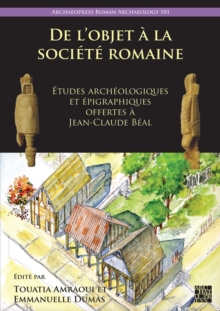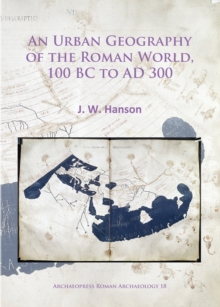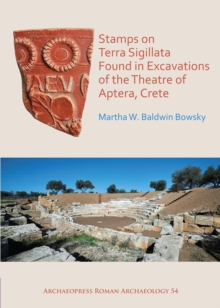
Romans, Rubbish, and Refuse : The archaeobotanical assemblage of Regione VI, insula I, Pompeii Paperback / softback
by Charlene Alexandria Murphy
Part of the Archaeopress Roman Archaeology series
Paperback / softback
- Information
Description
Although world-renowned, Pompeii, the first Roman site to be excavated and one of the most visited and best-studied archaeological sites in the world, still has unanswered questions to yield, especially in terms of its long-term development from pre-Roman times.
The extensive excavations (1995-2006) by the Anglo-American Project in Pompeii (AAPP) has provided a rare insight into chronological change within the city of Pompeii.
This research was significant as an insula block within the city of Pompeii had never previously been excavated in its entirety.
The analysis of all the recovered seeds, fruits and cereal remains has provided a unique research opportunity to undertake a diachronic study of urban Roman plant food consumption and discards.
Over the past two centuries of excavations at Pompeii only a handful of published works dealing with botanical evidence have been published.
The results from this study demonstrate a standard Mediterranean archaeobotanical assemblage recovered from Insula VI.1 which included wheat, barley, legumes, olives, grapes and figs.
A wider diversity of fruits, pulses, and additional cereals, especially broomcorn millet were also found.
These results support the established view that Pompeii was a fully urbanised city in the 1st century B.C.
Information
-
Out of StockMore expected soonContact us for further information
- Format:Paperback / softback
- Pages:149 pages, Illustrated throughout in black & white with 1 colour plate
- Publisher:Archaeopress
- Publication Date:31/05/2015
- Category:
- ISBN:9781784911157
Other Formats
- PDF from £17.10
Information
-
Out of StockMore expected soonContact us for further information
- Format:Paperback / softback
- Pages:149 pages, Illustrated throughout in black & white with 1 colour plate
- Publisher:Archaeopress
- Publication Date:31/05/2015
- Category:
- ISBN:9781784911157



